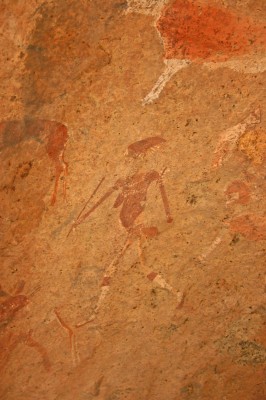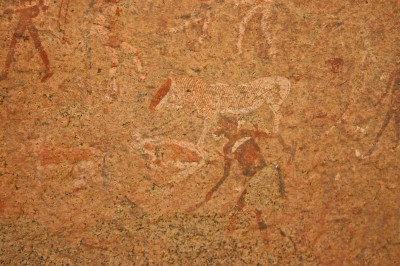What I find so special about the Namibia is its landscapes. They are all about rock and sand served up in different ways. Sometimes there are huge, rounded boulders strewn about like a giant’s game of marbles. Sometimes we see striated rock faces with beautiful patterns, sometimes just flat, white or red sandscapes. Here and there a plant struggles to survive, battered by the hot winds, scorched by the blazing sun, and munched on by hungry grazers.
We take a closer look at a few of the weird Welwitschia, a type of plant that is just as hard to understand as it is to spell. It is a primitive plant classified as a gymnosperm and has a tiny family – it being the only member. It looks like a wilted lettuce with a huge tangle of leaves but actually only has two huge ones that tend to get messed about in the wind and weather and get mangled by animals. They grow very old. Apparently, average-sized specimens are 500-600 years old. Welwitschia are found nowhere else in the world but the Namib Desert.
Even older is the prehistoric rock art that we see at the White Lady site, which is reached by a pleasant one-hour walk among rocks and grasses. As we walk in the quiet heat we are lucky to spot a few brownish rock hyrax, furry little rabbit-gopher-squirrel kind of things that make a mad dash for a group breakfast for an hour in the morning and again in the afternoon for a rushed communal dinner. They do this to minimise getting gobbled by predators.
Anyway, back to the rock art. Fascinating and beautiful, the drawings depict hunters and their prey in earthy, African colours and style. The monochromatic bits are about 5,000 years old while the coloured drawings are estimated at 2,000 years.
It can be hard to see the details in each drawing clearly because they are so old and made with natural colours. But they have certainly held up well, all things considered.









